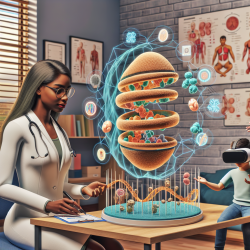Introduction
Autism Spectrum Disorder (ASD) affects approximately 2% of children in the United States, with mitochondrial dysfunction being a significant physiological abnormality associated with ASD. Recent research highlights the potential for targeting mitochondrial dysfunction as a treatment strategy for ASD. This blog explores the implications of these findings for practitioners, focusing on how they can improve their skills and outcomes for children with ASD.
Understanding Mitochondrial Dysfunction in ASD
Mitochondrial dysfunction in ASD manifests through various clinical symptoms, including neurodevelopmental regression, gastrointestinal issues, seizures, motor delays, and fatigue. Traditional biomarkers like lactate and pyruvate have been reported as abnormal in ASD, but newer biomarkers such as buccal cell enzymology and fatty acid metabolism markers are emerging as more specific indicators.
Clinical Implications for Practitioners
Practitioners can leverage these insights to enhance their diagnostic and therapeutic approaches. Key actions include:
- Incorporating advanced biomarker testing to identify mitochondrial dysfunction in children with ASD.
- Monitoring for symptoms like unusual regression and fatigue, which may indicate mitochondrial issues.
- Exploring mitochondrial-targeted treatments, such as supplements and dietary adjustments, which have shown promise in preliminary studies.
Encouraging Further Research
While current findings are promising, further research is essential to fully understand the role of mitochondrial dysfunction in ASD. Practitioners are encouraged to engage in or support research efforts that aim to clarify these mechanisms and develop targeted interventions. Collaborative research could lead to breakthroughs in personalized treatment plans for children with ASD.
Conclusion
Mitochondrial dysfunction presents a promising avenue for improving outcomes in children with ASD. By integrating these insights into practice, practitioners can contribute to a more nuanced understanding of ASD and enhance therapeutic strategies. To delve deeper into the research, access the original paper: Clinical and Molecular Characteristics of Mitochondrial Dysfunction in Autism Spectrum Disorder.










